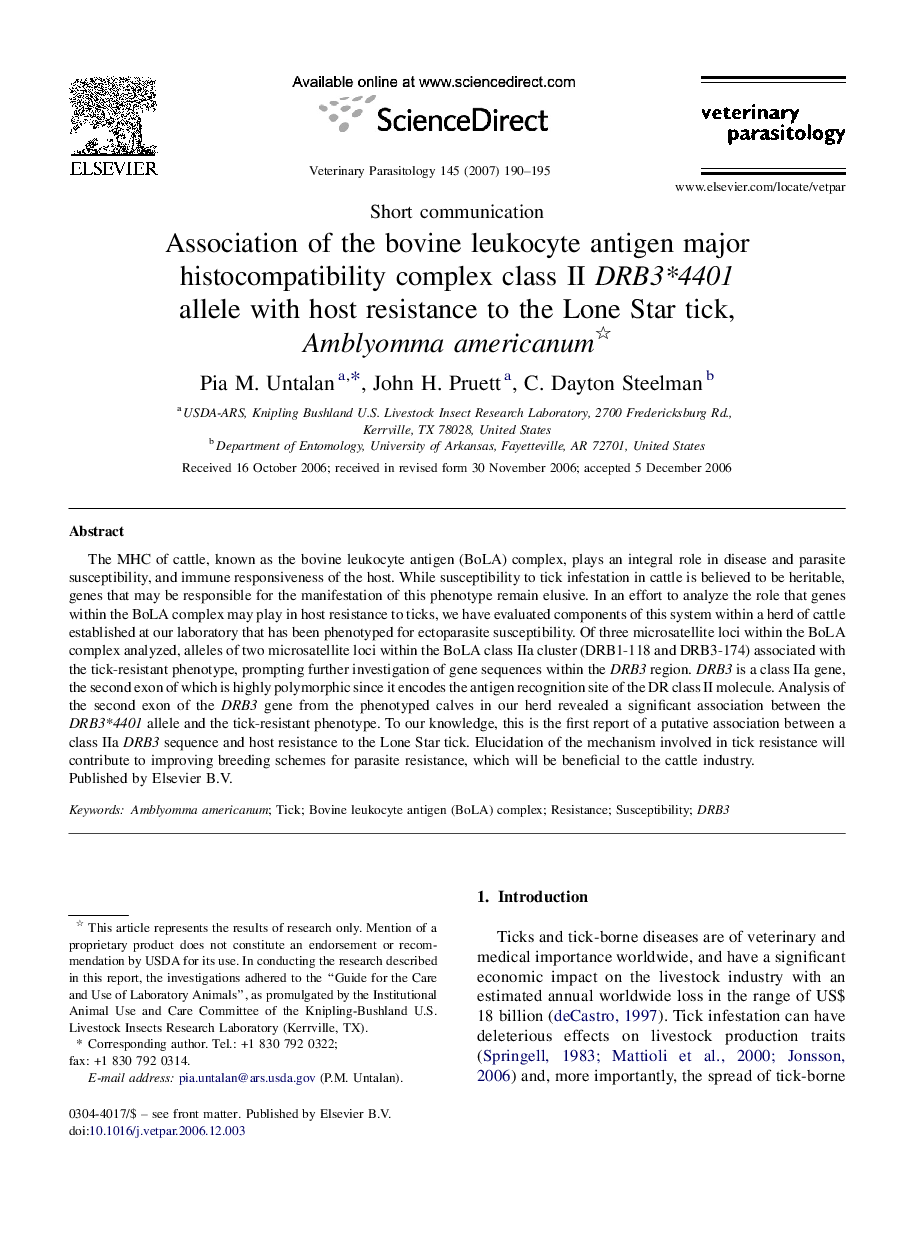| Article ID | Journal | Published Year | Pages | File Type |
|---|---|---|---|---|
| 2472078 | Veterinary Parasitology | 2007 | 6 Pages |
The MHC of cattle, known as the bovine leukocyte antigen (BoLA) complex, plays an integral role in disease and parasite susceptibility, and immune responsiveness of the host. While susceptibility to tick infestation in cattle is believed to be heritable, genes that may be responsible for the manifestation of this phenotype remain elusive. In an effort to analyze the role that genes within the BoLA complex may play in host resistance to ticks, we have evaluated components of this system within a herd of cattle established at our laboratory that has been phenotyped for ectoparasite susceptibility. Of three microsatellite loci within the BoLA complex analyzed, alleles of two microsatellite loci within the BoLA class IIa cluster (DRB1-118 and DRB3-174) associated with the tick-resistant phenotype, prompting further investigation of gene sequences within the DRB3 region. DRB3 is a class IIa gene, the second exon of which is highly polymorphic since it encodes the antigen recognition site of the DR class II molecule. Analysis of the second exon of the DRB3 gene from the phenotyped calves in our herd revealed a significant association between the DRB3*4401 allele and the tick-resistant phenotype. To our knowledge, this is the first report of a putative association between a class IIa DRB3 sequence and host resistance to the Lone Star tick. Elucidation of the mechanism involved in tick resistance will contribute to improving breeding schemes for parasite resistance, which will be beneficial to the cattle industry.
